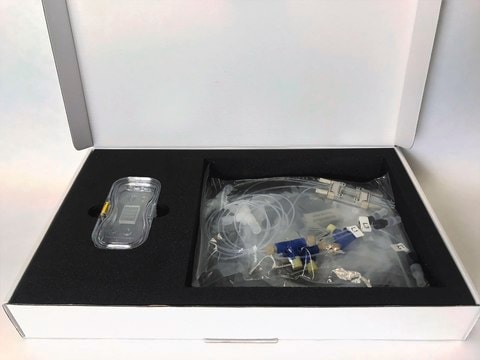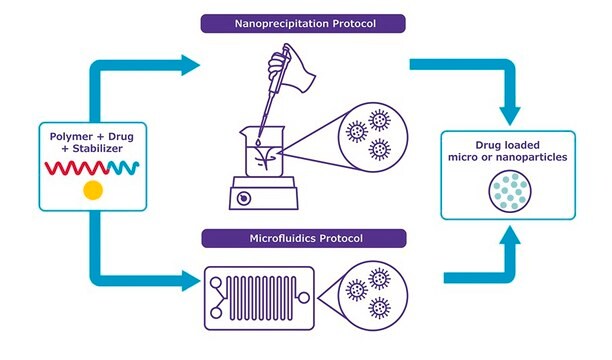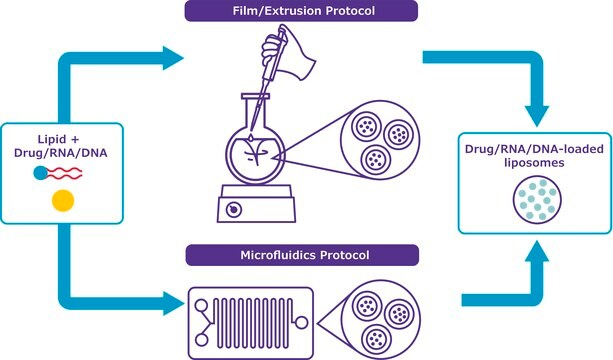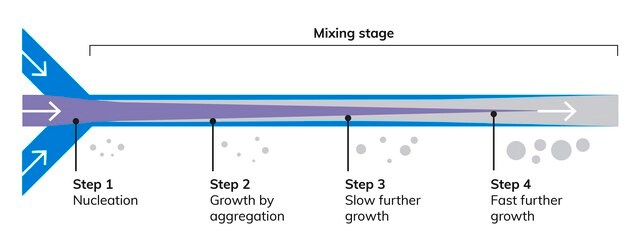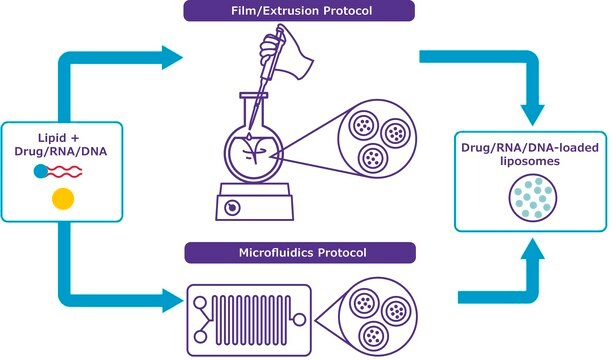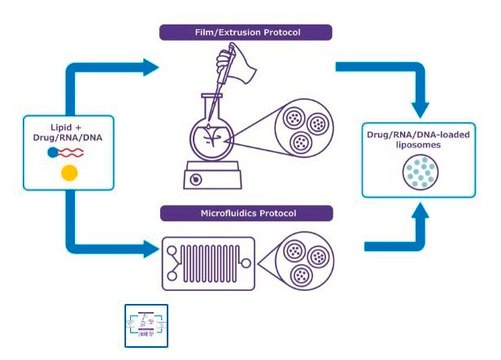915408
NanoFabTx™ PEGylated nanoparticle formulation screening kit
Sinonimo/i:
NanoFabTx™ reagent kit, Nanoparticle synthesis kit, PEGylated nanoformulations
About This Item
Prodotti consigliati
Descrizione
Kit components :
PEGPLGA-50L (912808-500mg)
PEGPLGA-75L (913049-500mg)
PEGPLA-L (913308-500mg)
PEGPCL-H (912549-500mg)
Stabilizer - P (913448-10g)
Materials screening kit, for synthesis of PEGylated polymeric nanoparticles
Livello qualitativo
applicazioni
advanced drug delivery
Temperatura di conservazione
2-8°C
Categorie correlate
Descrizione generale
Applicazioni
Caratteristiche e vantaggi
- Provides step-by-step protocols, both for standard extrusion or microfluidic-based synthesis, developed and tested by our formulation scientists
- Microfluidic formulation development for enhancing drug bioavailability
- Flexible synthesis tool to create uniform and reproducible nanoparticles
- Optimized to make nanoparticles from 60-100 nm
- Includes 4 different PEGylated polymers to identify the optimal material
Note legali
Prodotti correlati
Codice della classe di stoccaggio
12 - Non Combustible Liquids
Scegli una delle versioni più recenti:
Certificati d'analisi (COA)
It looks like we've run into a problem, but you can still download Certificates of Analysis from our Documenti section.
Se ti serve aiuto, non esitare a contattarci Servizio Clienti
Possiedi già questo prodotto?
I documenti relativi ai prodotti acquistati recentemente sono disponibili nell’Archivio dei documenti.
Global Trade Item Number
| SKU | GTIN |
|---|---|
| 915408-1EA | 4061841722908 |
| 915408-1KT | 4065266037265 |
Il team dei nostri ricercatori vanta grande esperienza in tutte le aree della ricerca quali Life Science, scienza dei materiali, sintesi chimica, cromatografia, discipline analitiche, ecc..
Contatta l'Assistenza Tecnica.